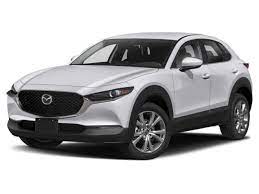
Introduction
As the clock struck midnight on December 31, 2023, New Zealand bid farewell to its Clean Car Discount (CCD), marking the end of an era that played a significant role in the country’s electric vehicle (EV) revolution. The pioneering policy, which incentivized the purchase of low-emission vehicles through rebates and imposed fees on high-emission vehicles, has left motorists and industry experts contemplating the road ahead. In this article, we will explore the implications of the CCD’s demise, analyze its impact on EV adoption, examine the future of petrol and diesel vehicles, discuss the roadmap to decarbonization, and consider the potential effects on the used car market and regional EV adoption in New Zealand.
The Clean Car Discount: An Overview
The Clean Car Discount (CCD) was a crucial component of the Clean Car Programme (CCP), a policy initiative aimed at reducing transport emissions in New Zealand. Under the CCD, low-emission vehicles were eligible for rebates, while high-emission vehicles faced substantial fees. This carrot-and-stick approach successfully incentivized the purchase of cleaner vehicles and resulted in a surge in battery electric vehicle (BEV) and hybrid electric vehicle (HEV) sales, significantly reducing the average CO2 emissions of imported cars.
However, concerns about the scheme’s cost and potential market distortions led the current government to pull the plug on the rebates and fees associated with the CCD. Effective from January 1, 2024, no vehicles will be subject to CCD fees. While the CCD is coming to an end, the Clean Car Standard (CCS), a related policy that sets targets for the average CO2 emissions of imported vehicles, will remain in effect.

Impact on EV Adoption
One of the key questions following the discontinuation of the CCD is how it will affect EV adoption in New Zealand. The CCD provided a financial incentive for Kiwis to embrace EVs, making them an enticing choice. With the removal of this incentive, some analysts anticipate a potential slump in EV sales. However, others believe that the momentum gained from falling battery costs and the expansion of the local charging network may continue to drive EV adoption.
The answer to whether the discount jumpstarted a nascent EV culture or served as the fuel to keep the engine running will determine the trajectory of local EV adoption in the coming years. While the end of the CCD may pose challenges, it is crucial to monitor consumer behavior, infrastructure development, policy interventions, and evolving technology to navigate this uncharted territory successfully.
Revival of Petrol and Diesel Vehicles?
With the financial disincentive for high-emission vehicles removed, there is a possibility of a resurgence in the popularity of petrol and diesel vehicles. Budget-conscious buyers, no longer burdened by CCD fees, may gravitate towards these options. However, the presence of the Clean Car Standard (CCS) acts as a speed bump, setting CO2 targets for imported vehicles and curbing the worst offenders. The interplay between the removal of the CCD and the CCS will determine whether petrol and diesel vehicles make a triumphant comeback or if the Standard can keep them in check.
Roadmap to Decarbonization
The decision to end the CCD has left many questioning the government’s plans for decarbonization in the transport sector. While vague hints have been dropped, a clear roadmap is yet to be revealed. Will there be investments in public transport, cycling infrastructure, or a new and improved incentive scheme? The absence of a concrete plan raises concerns that the journey towards decarbonization could become a meandering trip rather than a smooth cruise towards a sustainable future. A clear and comprehensive roadmap, coupled with targeted policies and infrastructure investments, is necessary to ensure equitable access to cleaner transportation options across all regions.
Impact on the Used Car Market
The removal of the CCD raises questions about how the values of used EVs will be affected. Without the financial allure of rebates, buyers may shift their focus back to cheaper, higher-emission petrol and diesel options. However, it is important to consider that EVs still offer lower running costs and lower maintenance requirements, which may maintain their appeal even without the discount. This dynamic could result in newer EVs holding their value well, while older models depreciate at a faster rate. Monitoring the fluctuations in the used car market will provide insights into the long-term impact of the CCD’s discontinuation.
Regional Adoption of EVs
Rural areas face unique challenges when it comes to embracing EVs. Limited charging infrastructure and longer distances create barriers to entry for rural communities. The CCD played a crucial role in making EVs more financially accessible, bridging the gap between urban and rural EV ownership. Without this incentive, rural adoption could stagnate, exacerbating the divide between different regions. To ensure equitable access to cleaner transportation options, targeted policies and infrastructure investments are essential.

Conclusion
The discontinuation of the Clean Car Discount marks a turning point for electric vehicle mobility in New Zealand. While the impact of this decision remains uncertain, it is crucial to monitor the long-term effects on EV adoption, the possible revival of petrol and diesel vehicles, the development of a clear roadmap to decarbonization, the dynamics of the used car market, and the regional adoption of EVs. By closely observing consumer behavior, investing in infrastructure, implementing targeted policies, and adapting to evolving technology, New Zealand can navigate the post-CCD era and continue its journey towards a sustainable and low-emission future.



No comments! Be the first commenter?